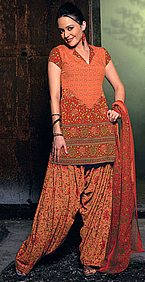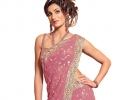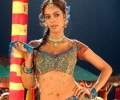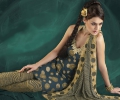fashion is a massive part of South Asian culture
South Asians do not do things by half and certainly have made their mark in the UK. Curry is the national dish in Britain, English tattoo places are selling a “mehndi” design as a new and trendy tattoo and South Asian artists are breaking into the English charts. But that’s not the end of the list, fashion is a massive part of South Asian culture too and there are different styles to choose from.
First and foremost the Salwar Kameez. The Salwar is a pyjama like trousers, which is drawn in a tight manner at the waist and the ankles. Depending on its style and personal choice, how tight or loose it is, does vary. Accompanying the Salwar is the Kameez, which is a long and comfortable tunic. The finishing touch to this outfit is the Dupatta which is a long scarf usually worn around the neck or covering the head.
The regular Salwar Kameez style is loose-fitting drawstring pants with gathers. This kind of style has proved to be very popular, just perfect for daily and special wear-outs.

During the 16th and 17th century the Salwar had even more of an impact whilst fading away into the background when the British Raj conquered India. But it made a revival back in the late 1950s to early 1960s and has been in the limelight ever since.
Next is the Lengha Choli. When the Moghuls invaded India in early B.C. they brought with them this unique style of a skirt and blouse. Today this style is most popular with Indian brides who wear this for their wedding gown. You can have any style in the Lengha, add any type of embroidery even decide the weight you want it. The other good feature with the Lengha is that it can be worn by any age group and still look good!
The Choli is the upper garment worn with the Lengha. The typical design of a Choli is a low neck, a bare midriff and short sleeved arms. Choli designs are quite varied, from the conservative to the very liberal. As well as the Choli being worn with the Lehnga, it is also worn with a Saree, as the Saree-Blouse that accompanies it.

Origination of the Saree or Sari varies. Some historians believe it dates back to 2800-1800 BCE. Folktale has it that a weaver who dreamt about a woman in detail whilst spinning, spun for yards, hence birth of the Saree. Humiliation of Draupadi, (wife of the Pandavas), by the Kauravas who tried to unveil her but could not reach the end of the material, is another adaptation of the birth of the Saree.
So, there you have it, three popular styles which represent South Asian fashion but also dominate our everyday dress sense. Styles that have made endless appearances in Bollywood films, at weddings, social functions and still continue to grow in our fashion industry.
Below, you can see a variety of designs of these styles of South Asian fashion.
















































































